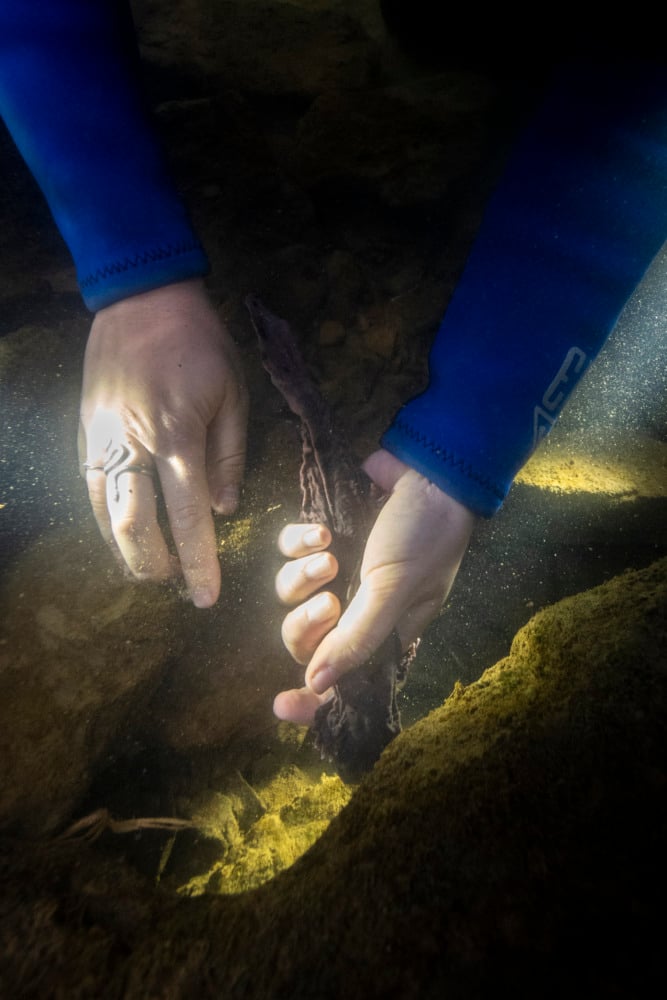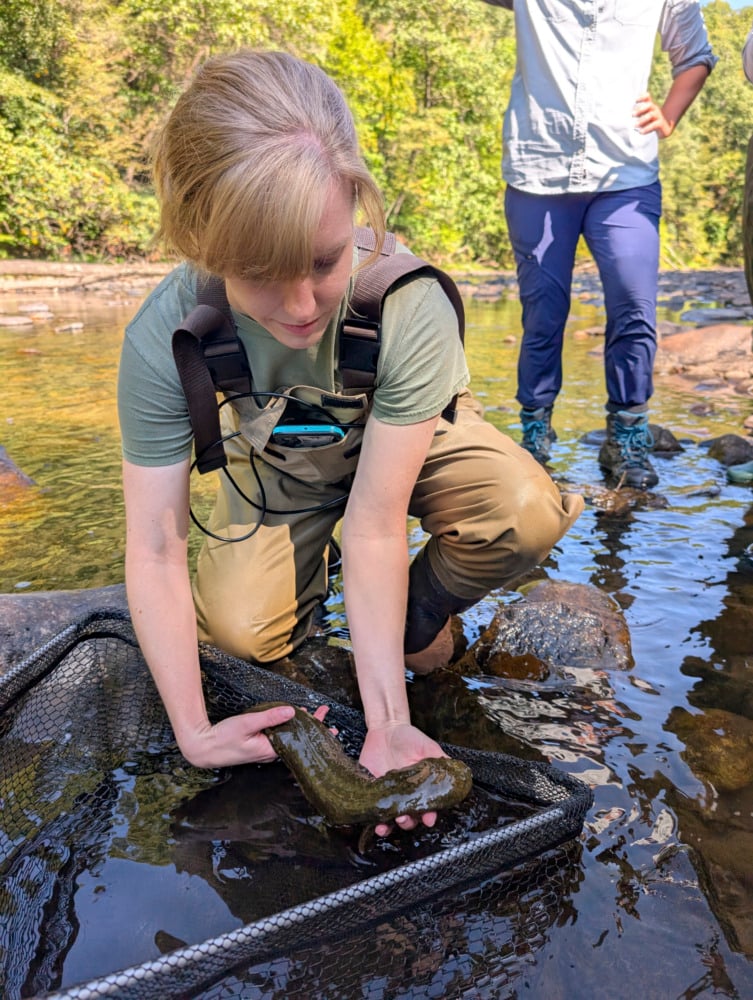Ohio’s slipperiest residents are making a comeback. This summer, the Columbus Zoo and Aquarium and The Wilds released 116 eastern hellbenders, North America’s largest salamanders, into protected waterways across eastern Ohio and West Virginia.
These gentle, two-foot-long amphibians (lovingly nicknamed “snot otters”) are surprisingly sensitive creatures that only thrive in clean, clear water.

For decades, pollution and habitat loss nearly wiped them out, but a massive recovery effort led by the Ohio Hellbender Partnership, including the Columbus Zoo, The Wilds, Ohio State, and other partners, is turning the tide.
For more than ten years, conservationists have carefully raised young hellbenders from eggs.
This gives them a head start before releasing them back into Ohio’s streams. Since 2012, more than 2,000 have been released, and last year, researchers confirmed something incredible: some of those reintroduced hellbenders are now breeding in the wild.
“This is quiet work that adds up,” said Greg Lipps, Conservation Biologist at the Columbus Zoo. “One stream, one release, one more sign that clean water and wildlife can thrive together.”
Beyond raising and releasing salamanders, teams also maintain “hellbender huts”, small artificial shelters that make it easier to study and protect the elusive amphibians. This year alone, crews found 19 huts already inhabited, some even containing eggs, which is a hopeful sign for the species’ recovery.

If you want to see these weird and wonderful creatures up close, you can visit the Ohio Center for Wildlife Conservation in the Zoo’s new North America Trek region, or take a trip to The Wilds, where the brand-new Hellbender RV Campground offers a unique way to connect with nature (and a bit of amphibian magic).
Because when the hellbenders are doing well, it means Ohio’s rivers (and the communities that depend on them) are thriving too.




